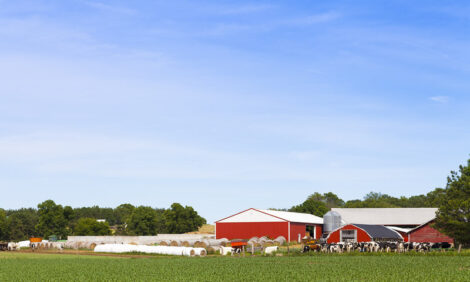



New Research Shows Selective Dry Cow Therapy Reduces Microbial Resistance
Research investigating selective dry cow antibiotic therapy was a highlight at the international meeting for the National Mastitis Council, according to Dr. Ivan Leyva-Baca, veterinarian and product application specialist with Thermo Fisher Scientific. Diagnostics play a big role in these studies.Research investigating selective dry cow antibiotic therapy was a highlight at the international meeting for the National Mastitis Council, according to Dr. Ivan Leyva-Baca, veterinarian and product application specialist with Thermo Fisher Scientific. Diagnostics play a big role in these studies.
"A lot of the international scientists that focus on mastitis research are presenting their findings here," said Dr. Leyva Baca. "There's been a lot of presentations that are outstanding, but one that caught my attention is from the Netherlands, where they've been focusing over the last 10 years on investigating selective dry cow antibiotic therapy. The goal of that type of approach is to reduce the use of antibiotics in the dry period of a cow by using selective treatment."
Previously, producers were treating every quarter with antibiotics regardless if the animal was infected with mastitis or not and regardless of their somatic cell count score. With the selective dry cow treatment approach, treatment is focused only on the cows that have a high somatic cell count score.
"The results are really remarkable. The Dutch group [Prof. Ynte Schukken of GD Deventer] presented results that show that a reduction of the usage of antibiotics also reduces the antibiotic resistance of the microbes those animals carry and that's pretty outstanding," he said. "In the case of animals treated with blanket antibiotic therapy, the antimicrobial resistance of those pathogens was pretty high. So it's a new finding that it's really promising."
Diagnostics played a significant role in those studies, according to Dr. Leyva-Baca. While somatic cell counts had been used as the first line determination if an animal should be treated or not, the use of diagnostic tools that provide more information from the sample can be a promising next step.
"Molecular diagnostic tools can give you more granular answers about the type of pathogens that are present in those infections versus just knowing that there's some inflammation process going on due to infections, which is the answer that somatic cell count scores provide," he said. "We're pretty excited about partnering with groups in the following years to execute studies that can give them a little bit more granularity on the pathogens present in their mastitis infections."
For more information about cattle diagnostics, click here or connect to the Thermo Fisher Scientific Cattle Resource Center.
Dr. Leyva-Baca spoke to TheDairySite at the 2018 International Bovine Mastitis Conference in Milano, Italy.




